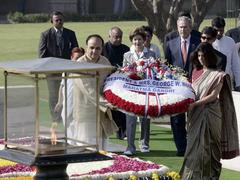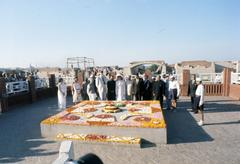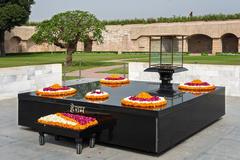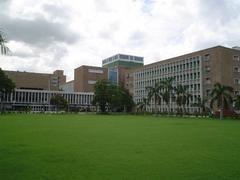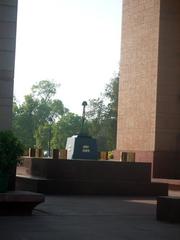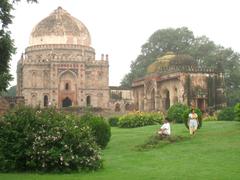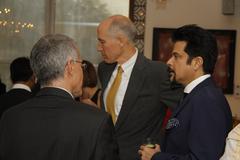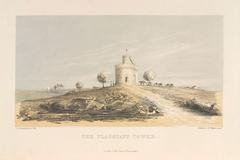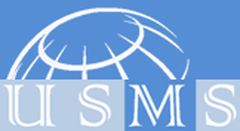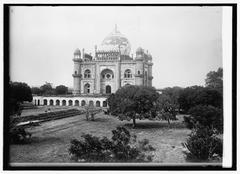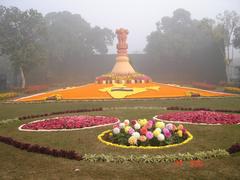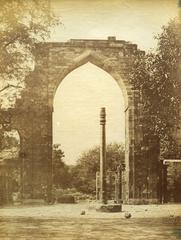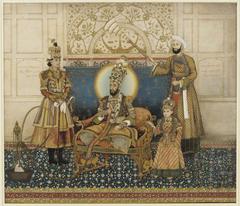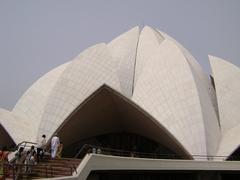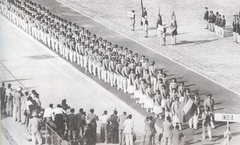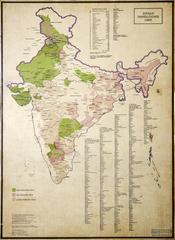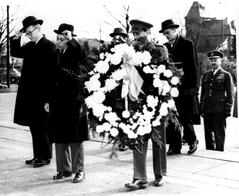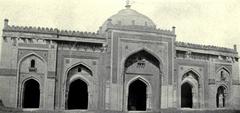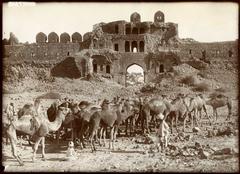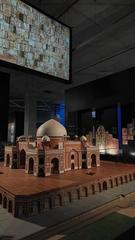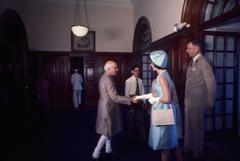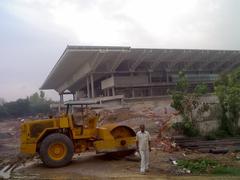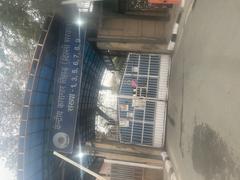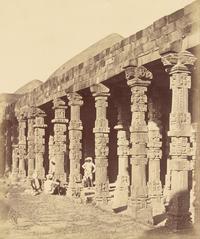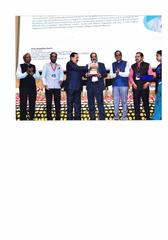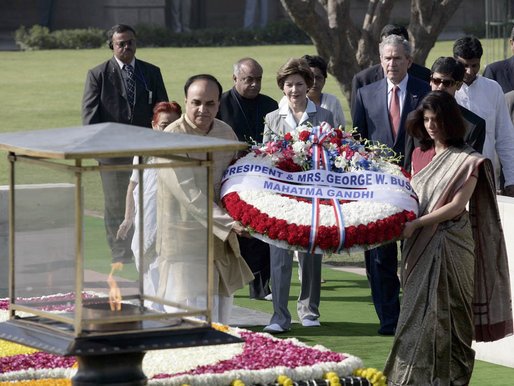
Visiting Raj Ghat and Memorials in New Delhi: Hours, Tickets, and Tips
Date: 16/08/2024
Introduction
Raj Ghat, nestled on the banks of the Yamuna River in Old Delhi, stands as one of India’s most sacred sites. Dedicated to Mahatma Gandhi, the Father of the Nation, it marks the spot of his cremation following his assassination in 1948. Designed by Vanu G. Bhuta, the memorial features a simple black marble platform inscribed with “Hey Ram”—Gandhi’s reported last words (History To Heritage). Surrounded by tranquil gardens and an eternal flame, Raj Ghat is both a site of pilgrimage and a symbol of the values of non-violence and truth that Gandhi championed. In its vicinity are memorials to other key figures in India’s history, such as Jawaharlal Nehru, Indira Gandhi, and Lal Bahadur Shastri, each reflecting their unique legacies (WikiMili). This guide provides a comprehensive overview of Raj Ghat and its associated memorials, including historical context, architectural details, practical visitor information, and tips to enrich your visit.
Table of Contents
- Introduction
- History and Significance of Raj Ghat and Associated Memorials
- Associated Memorials
- Visitor Information
- Cultural and Political Significance
- Architectural Features
- Visitor Experience
- Educational Importance
- Preservation and Maintenance
- Global Recognition
- FAQ
- Conclusion
- References
History and Significance of Raj Ghat and Its Memorials
Historical Background
Raj Ghat commemorates the cremation site of Mahatma Gandhi, who was assassinated on January 30, 1948, and cremated the following day. The memorial’s austere black marble platform, inscribed with “Hey Ram,” echoes Gandhi’s lifelong commitment to simplicity and truth. The eternal flame burning at one end of the platform symbolizes the enduring influence of Gandhi’s teachings (History To Heritage).
Symbolic Importance
Raj Ghat is more than a tribute to Gandhi—it is an emblem of India’s freedom struggle and the principles of peace and non-violence. The serene gardens enveloping the memorial invite reflection, while national leaders and dignitaries gather here on significant anniversaries to pay homage, reinforcing its ongoing cultural and political relevance.
Associated Memorials
Jawaharlal Nehru (Shantivan)
Adjacent to Raj Ghat is Shantivan, the resting place of Jawaharlal Nehru, India’s first Prime Minister. “Shantivan” means “Forest of Peace” and the memorial is surrounded by lush vegetation, symbolizing Nehru’s affinity for nature and his vision of a progressive India.
Indira Gandhi (Shakti Sthal)
Indira Gandhi’s memorial, Shakti Sthal (“Place of Power”), features a large, uncut rock—a symbol of her resilience and strength as India’s only female Prime Minister. The memorial’s naturalistic design reflects her enduring influence and formidable leadership.
Lal Bahadur Shastri (Vijay Ghat)
Vijay Ghat commemorates Lal Bahadur Shastri, the second Prime Minister of India, best remembered for his leadership during the 1965 Indo-Pakistan War and his iconic slogan “Jai Jawan Jai Kisan.” The memorial’s understated design honors his integrity and dedication to the nation’s development.
Further memorials in the Raj Ghat complex include those dedicated to Rajiv Gandhi (Veer Bhoomi), Charan Singh, and Atal Bihari Vajpayee, each echoing their individual contributions (Wikipedia).
Visitor Information
Hours & Entry
- Opening Hours: Raj Ghat is open every day. Timings are generally from 6:30 AM to 6:00 PM, though some sources state 5:00 AM to 7:30 PM. Visiting early morning or late afternoon is recommended for a quieter experience (Apna Yatra).
- Entry Fee: There is no entry fee; the memorial is open to all. Guided tours may be available for a nominal charge.
- Location: Raj Ghat, Gandhi Smriti, New Delhi, Delhi, 110006, India (Explore Our India).
Facilities
- Well-maintained gardens and walkways
- Drinking water stations
- Restrooms and seating areas
- Informational plaques in English and Hindi
Accessibility
Raj Ghat is wheelchair accessible, with broad, even pathways and ramps. The tranquil layout allows visitors to reflect without feeling overcrowded, even during peak hours (Suzanne Wanders Delhi).
Getting There
- Metro: Nearest station is Delhi Gate (Violet Line), about 2 km away; Rajiv Chowk station is also nearby.
- Bus: Multiple DTC routes stop near the site.
- Taxi/Auto-rickshaw: Readily available throughout Delhi (Explore Our India).
Cultural and Political Significance
Raj Ghat is the focal point for national ceremonies on Gandhi Jayanti (October 2) and Martyrs’ Day (January 30). On these occasions, top Indian leaders and foreign dignitaries gather for prayer meetings, cultural programs, and tributes to Gandhi’s ideals (WikiMili). The memorials also serve as powerful reminders of the nation’s journey toward freedom and justice.
Architectural Features
The architecture at Raj Ghat exudes simplicity and peace. The black marble platform, eternal flame, and surrounding square walled garden create a tranquil space for contemplation (History To Heritage). The use of natural elements, such as greenery and uncut stones in Shakti Sthal, reflects the personalities of the leaders commemorated.
The landscaping was initially overseen by Alick Percy-Lancaster, a horticulturalist whose work contributed to the memorial’s enduring beauty (Fab Hotels).
Visitor Experience
Layout and Design
The Raj Ghat complex is thoughtfully designed for a serene visitor experience. The main memorial is centrally placed, with gardens and pathways radiating outward. Each associated memorial is situated within walking distance, encouraging a comprehensive, reflective visit (Delhi Capital).
Etiquette
- Dress Code: Modest, respectful attire is required. Avoid shorts, skirts, or revealing clothing.
- Footwear: Shoes must be removed before entering the memorial area.
- Behavior: Maintain silence and decorum as a mark of respect (Delhi Tourism).
Tips
- Best Time to Visit: Early morning for tranquility and cooler weather (Delhi Vibes).
- Photography: Permitted, but be mindful of the solemn environment.
- Food: Not allowed inside; food and refreshments are available outside the complex.
Educational Importance
Raj Ghat is a key site for educational visits. Schools and colleges frequently organize field trips to teach students about India’s freedom movement and Gandhi’s philosophy. The National Gandhi Museum, nearby, enriches the educational experience with rare artifacts, documents, and interactive exhibits (Fab Hotels).
Preservation and Maintenance
The Raj Ghat Samadhi Committee is responsible for preserving the memorial’s physical and cultural integrity. Regular maintenance ensures the gardens and structures remain pristine. Special initiatives are undertaken to preserve the site’s peaceful ambiance and promote awareness of its historic importance.
Global Recognition
Raj Ghat’s significance extends beyond India’s borders, attracting statesmen and dignitaries from across the world, including Martin Luther King Jr., Nelson Mandela, and Barack Obama. The memorial stands as a universal emblem of peace, non-violence, and the ongoing relevance of Gandhi’s teachings.
FAQ
Q: What are the visiting hours for Raj Ghat?
A: Raj Ghat is open daily, generally from 6:30 AM to 6:00 PM.
Q: Is there an entry fee?
A: No, entry is free.
Q: How can I reach Raj Ghat?
A: By Metro (Delhi Gate or Rajiv Chowk), DTC bus, taxi, or auto-rickshaw.
Q: What should I wear?
A: Modest, respectful clothing; footwear must be removed at the entry.
Q: Are there special events?
A: Yes, prayer meetings are held every Friday at 5:30 PM and on Gandhi’s birth and death anniversaries (Fab Hotels).
Nearby Attractions
- Gandhi Darshan Museum: Showcasing Gandhi’s life through documents, pictures, and artifacts (Fab Hotels).
- National Gandhi Museum: Houses personal items and historical exhibits (Explore Our India).
- Red Fort and Jama Masjid: Iconic historic sites within a short distance.
Controversies and Challenges
Some critics have pointed out the use of expensive materials in Raj Ghat’s construction, questioning whether it aligns with Gandhian ideals. The government’s 2000 decision to halt the creation of new memorials due to land constraints has also sparked debate (WikiMili).
Environmental and Maintenance Efforts
The memorial’s lush gardens and clean pathways are a testament to ongoing environmental initiatives and maintenance efforts. The Raj Ghat Samadhi Committee ensures the site’s tranquility and symbolic value are preserved for future generations.
Summary and Key Points
Raj Ghat, together with its associated memorials, offers a unique opportunity to connect with India’s historical journey and the enduring legacies of its leaders. The site’s simplicity, serenity, and depth of meaning make it essential for understanding the values that continue to shape modern India (Delhi Capital). Whether attending a special event, exploring nearby attractions, or learning about the country’s past, a visit to Raj Ghat offers inspiration and reflection.
References
- History To Heritage – Gandhi’s Tomb Facts and Visit
- WikiMili – Raj Ghat and Associated Memorials
- Delhi Capital – Travel Guide: Raj Ghat
- Explore Our India – Raj Ghat
- Apna Yatra – Raj Ghat Delhi
- Fab Hotels – Raj Ghat Delhi
- Delhi Vibes – Rajghat Travel Guide
- Delhi Tourism – Raj Ghat Delhi
- Suzanne Wanders Delhi – Raj Ghat
- Wikipedia – Raj Ghat and Associated Memorials
